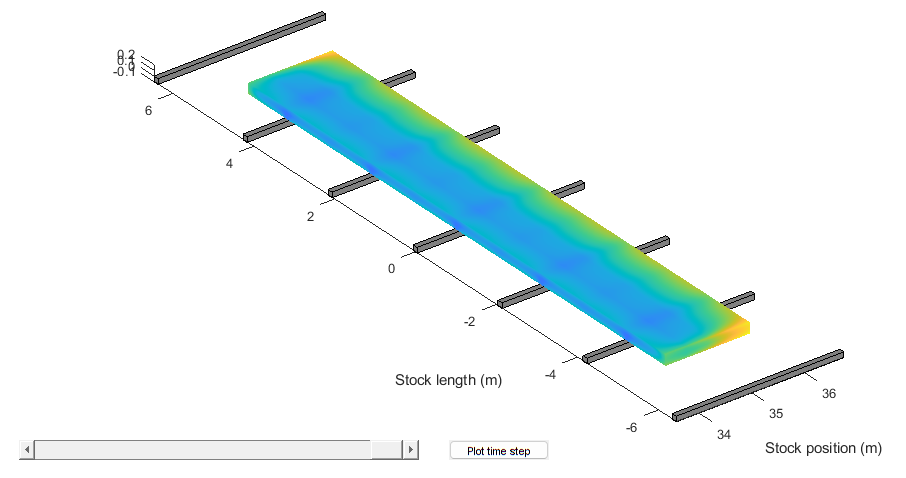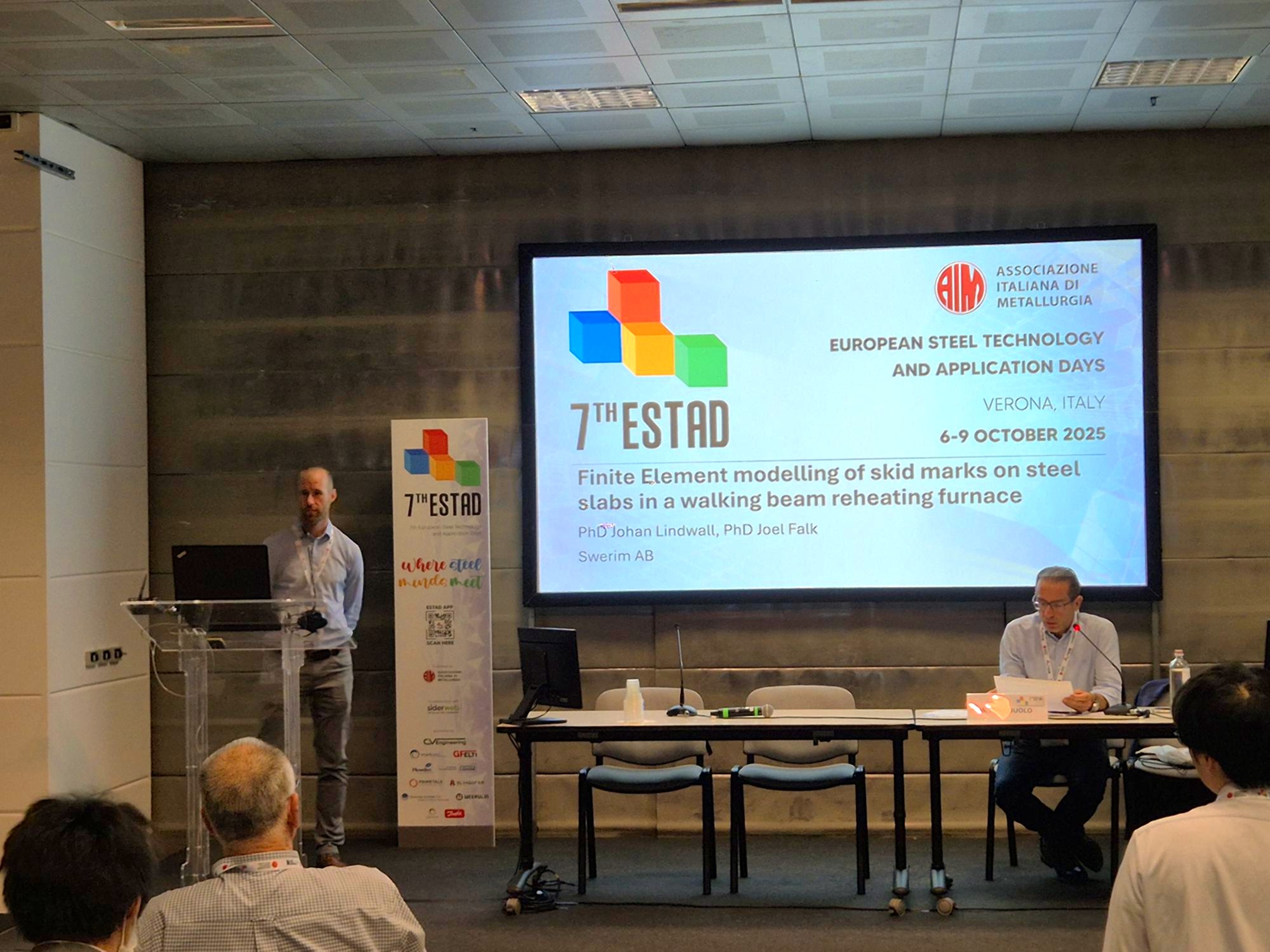As part of TWINGHY’s commitment to active dissemination and engagement with industry stakeholders, the project was highlighted at ESTAD 2025 (European Steel Technology and Application Days) in Verona, one of the most important international conferences for the steel sector. Two representatives from the consortium, Johan Lindwall (Swerim ) and Johannes Losacker (RWTH Aachen University), presented complementary aspects of the project, demonstrating TWINGHY’s multidimensional approach to decarbonising steel reheating.
Johan Lindwall from the metal research institute represented the Twinghy project, providing a presentation entitled ‘Finite element modelling of skid marks on steel plates in a walking beam reheating furnace’. In this presentation, he showcased advancements in modelling steel reheating in a walking beam furnace. This work represents a step forward in developing the digital twin with flexible and dynamic fuel use, promoting a more sustainable and energy-efficient reheating process.


His presentation generated significant interest among attendees, thereby enhancing the visibility of the Twinghy project within the European steel research and innovation ecosystem.
Johannes Losacker presented on the demonstration of fuel-flexible burners for hydrogen and natural gas mixtures, the retrofit of an industrial furnace, and first performance results from the trials. The hydrogen-fired demonstration is taking place at the Celsa 3 in Castellbisbal (Barcelona), where a walking beam furnace heats billets up to 1150 °C before hot rolling. The furnace is equipped with sensors to monitor wall and gas temperatures, gas composition, efficiency and NOx emissions. Early results show stable burner behaviour, uniform heating and valuable insights into emission trends during hydrogen operation. During the event, Losacker highlighted the retrofit strategy for the combustion system, the evaluation methodology for key performance indicators, and the first outcomes of the industrial trials. The work demonstrates the potential of hydrogen to support the decarbonization of steel reheating while maintaining operational performance.
TWINGHY will continue to share results with industry stakeholders as the demonstration campaign progresses, supporting informed decision-making in the transition toward cleaner steel production.
